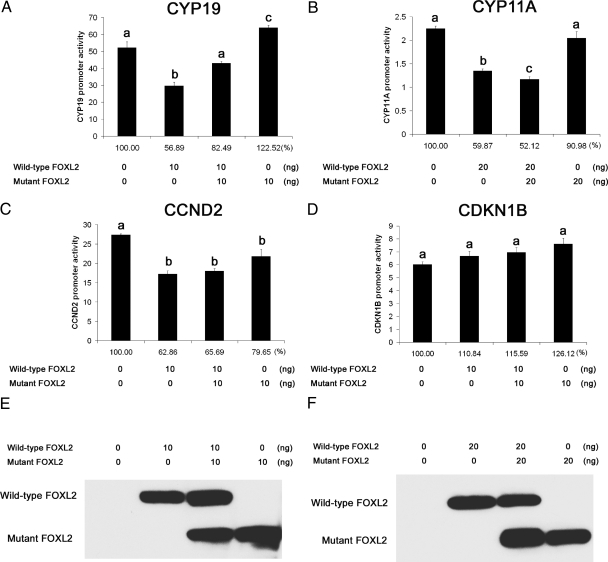Fig. 1.
Dominant-negative effect of mutant FOXL2. CHO cells were transiently transfected with wild-type FOXL2 and/or the FOXL2 (aa 1–218) mutant expression constructs, together with reporter constructs for CYP19 (A), CYP11A (B), CCND2 (C), or the CDKN1B control promoter (D). Twenty-four hours after transfection, the cells were lysed and luciferase activity measured. Results were first normalized against β-galactosidase activity and reported as the fold change relative to the luciferase activity of the empty pGL2 vector backbone under the same experimental conditions. Results were also calculated as the percentage of control (no FOXL2 transfected, 100%), shown below the columns. Coexpression with mutant FOXL2 led to a decrease in wild-type FOXL2's activity as a transcriptional repressor of the CYP19 promoter (A) but did not affect transcriptional repression of the CYP11A (B) or CCND2 (C) promoters. Mutant FOXL2 alone slightly induced transcription of the CYP19A promoter (A) and slightly repressed transcription of the CCND2 promoter (C). Each condition was tested in quadruplicate. One-way ANOVA was performed between samples, and different letters (a, b, or c) denote significant differences (P < 0.05) between samples. E and F, Western blots showing the relative amounts of wild-type and mutant FOXL2 protein expressed after transient transfection.

